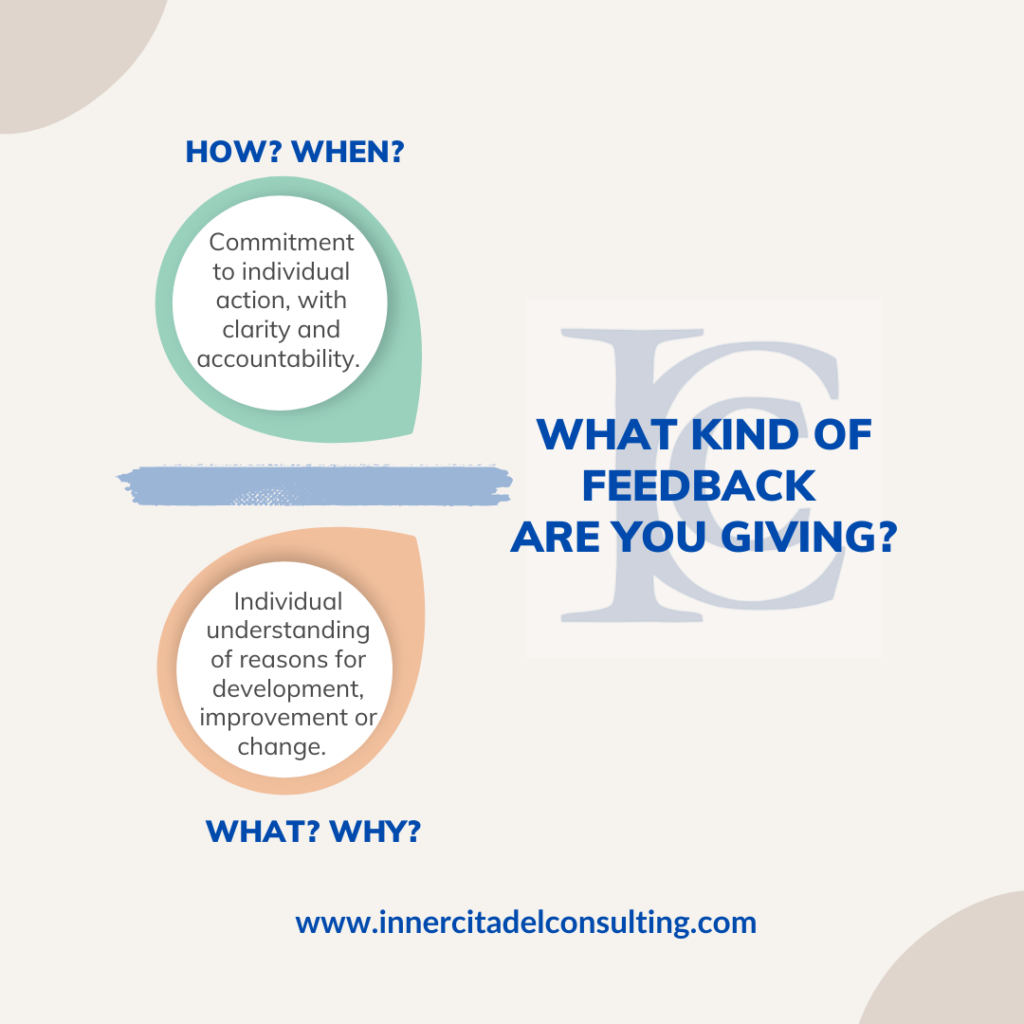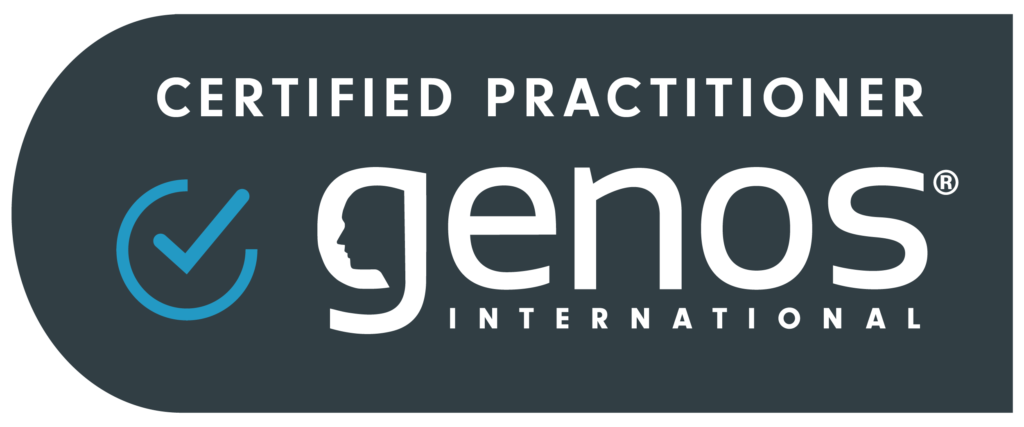I’ve had a number of groups working through #mindfulnessatwork projects finally arrive at the dreaded “feedback”. Why dreaded? Well, that’s often where the rubber meets the road. Read on for a four step framework for any feedback process.
Feedback systems are often misaligned with employee needs, either from a high-level process point of view (e.g. younger employees just don’t want or need yearly or semi-annual performance reviews) or from an on-the-ground perspective, where many times the feedback conversation happens without any planning. First principles, friends! Never back into a significant feedback conversation by accident.
I’ve recently been looking at – and experienced in my own professional career – a range of feedback processes (think, feedback sandwich, et cetera). There is a wedge missing from many of these that I think an #organizationalmindfulness perspective can fill. This can work no matter what formal process or system you use. The wedge is C A L M.
Connect. Use “we” language and mindset to boost empathy.
Align. Get in the same headspace, literally.
Listen. Be curious. Check for understanding. Listen past the words.
Motivate. Create buy-in and build an internal motivation.
C – Connect.
In your conversation use “we” language as much as possible and sensible. You can’t use it for everything, but wherever you can, “we” are both the problem and the solution. There are two important things happening here. The first and most important is that you are activating an empathetic context. One of the easiest ways to damage empathy is to create “us/them” distinctions, in and out groups. Using “we” language actively works against that tendency. The second thing is that you are signaling an interest in a shared solution to an issue. Sure, the work might be that person’s to do, but your language of connection means that you are supporting change. You can connect in other ways, like asking about family and so on, but let’s stay real. You’re there to get work done… together. And one of the best ways to start is by just breathing together and focusing for the conversation ahead.
A – Align.
Ever walk into a meeting wondering what it’s really about or walk out of a meeting wondering what the heck happened? As you might suspect, you’re not alone. But the reasons why from a brain science perspective might interest you. There’s perhaps the obvious part of this, that when we’re under stress our brains are pretty limited in how they can approach problems. We need to align into the purpose of the conversation. So, for instance, always make it clear ahead of time what you’re going to be talking about. You wouldn’t invite people to a costume party without tell them it’s a costume party. Why do it for a meeting? But we also need to align our brain states. This is not some woo-woo stuff, where we mind-meld or something. We can simply take 90 seconds at the beginning of the meeting, or at any point it gets really tense, to quietly breathe in and out of our nose or do some box-breathing to drive down anxiety.

Just as important, we should align on how we need to be thinking during the feedback process. There’s some pretty awesome research showing that part of why meetings are tough is that our brains are in different thinking modes at different times – the area of research is called “collaborative intelligence”. Check out this TEDx talk from Paddy Upton if this is a new idea for you.
When we’re in conversation or dialogue, the two main modes are the “what/why” mode and the “how/when”. In the “what/why” mode we are thinking quite expansively about shared goals, common purpose, strategy and mission. We might use this if someone’s performance is good, but they’re not managing their efforts in useful directions (e.g. spending lots of time on organizing not enough time on execution). So, you need a conversation about what needs to change and why change is needed. In the “how/when” mode we are thinking of execution, commitment to action, clarity and accountability. Someone might need this kind of conversation if he’s clear on what is not going well and why improvement matters, but just can’t see how or needs clear goals and accountability support.
This seems really simple, but it is HARD. Think back to a meeting that went off the rails. I can guarantee that at a critical point people were in different modes and the meeting either got stuck or some people in the meeting started drawing up to-do lists without thinking about strategic impacts or what effect they were about to have on others. So, make absolutely sure you know what mode you need to be in, communicate how you need the conversation to happen, and align your expectations.
L – Listen
Most people are genuinely good people, trying their best to do the work they think they should be doing under the conditions of their lives. In a feedback conversation, your ability to listen and be curious is essential for long term success and buy-in. Listening with curiosity also reinforces your connection and empathy. “I think I hear you saying this…, did I hear that right?”. “Tell me more about that.” “What else is important here?” Phrases like this are the secret sauce to good feedback conversations. You already know this is true form the times you were on the receiving end of this kind of curiosity. And you already know the uglier side: being told what to change by someone who really does not understand what is going on. I swear, there is nothing that shuts me down faster than someone who is not interested in finding out what I tried, what I think, or how I work. Listen to what your colleague is saying. Be curious about what is contributing to the situation. Check to be sure you are understanding what is being said (and not said). Teams high in emotional intelligence, by the way, do this all the time.
M – Motivate
How many feedback conversations have you left (either as the giver or the receiver) wondering what happens next? Motivation is the key to change of any kind. It used to be fine to run motivation from the outside – extrinsic motivation. Think reward or punishment. “Make this change and you’ll see that promotion and raise.” But these days, and increasingly with the new generation of employees, people need to buy-in, to make sense of the effort with their own “why”, and to understand why the change matters. Hey Gen-Xers (like me), it’s not selfish to need to know why, or to connect your work to a larger purpose or way to contribute.
Sometimes that internal driver – intrinsic motivation – is the one that takes the change across the finish line. If you can’t connect, align, or listen, you’ll never create motivation from the inside. The single most powerful way to end a feedback conversation is with this question, “Would you be willing to ….?” The only answers are Yes or No. If you get a Yes, then you’re off – all you need at that point is to make sure to follow up on your end with support and accountability. If you get a No or a hesitation, your conversation is not finished.
CALM up.
Just think! How many times have you known that a course of action was wrong or would have a less than good outcome? Were you ever asked if you were willing to implement? If you were and you said Yes when you were thinking No … that’s on you. But I bet most of the time, no one asked. You had a conversation. Your manager presented the action plan he had already decided on before you talked. You were expected to do it, or else. That’s not motivation, that’s poor management.
If you want to talk about how to improve your organization’s feedback frameworks with some CALM, let’s connect! It’s not rocket science, but it does require some careful thought and a solid mindset.






